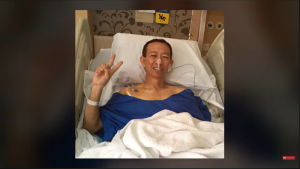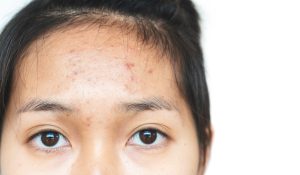In a recent landmark advisory, US Surgeon General Dr. Vivek Murthy highlighted the crucial intersection of youth mental health and social media.
An estimated 95% of teenagers aged 13-17 use social media, emphasising the urgency for robust action plans to navigate them safely through these digital landscapes.
Research increasingly suggests a correlation between excessive social media use and adverse mental health outcomes in adolescents, including symptoms of depression and anxiety.
Urgent action is required from various stakeholders to mitigate potential risks and foster safer online environments.
Dr. Jacqueline Cheung, a psychiatrist from Cebu, Philippines, adds, “In Asia, there is much more social and cultural stigma on mental health issues compared to many Western countries. However, this does not mean we have a lower prevalence of mental health issues.”

Dr. Cheung encourages parents to “have open conversations about mental health issues with their children, and to approach these discussions with a curious and non-judgmental attitude. Explore the ‘why’s’ and ‘how’s’ of a problem before jumping to solutions. This promotes trust and encourages open dialogue. Furthermore, by reading about mental health and its current issues, parents may be in a better position to educate their children. It is important for children to learn trusted information.”
Additionally, Dr. Cheung emphasises the role of government and social institutions: “Government or social institutions may continue to provide mental health education to the community. They can continue offering their services, such as care in psychiatric facilities, referrals to mental health institutions, and the availability of emergency crisis hotlines. Opening up these avenues where people can access mental health care can also reduce the stigma towards it.”
Social Media: A Double-Edged Sword
Social media platforms offer a wealth of benefits such as promoting creativity, providing emotional support, and connecting users with peers. However, they can also engender body dissatisfaction, disordered eating behaviours, unhealthy social comparison, cyberbullying, and low self-esteem, especially among adolescent girls.
As Dr. Cheung points out, “treating mental health issues for teenagers is a unique challenge for me because of a lack of training. There are not enough mental health practitioners who are trained to meet the needs of children and adolescents.”
Moreover, she adds, “the majority of mental health services are in urban areas. It may be difficult to reach teenagers living in rural areas, and there may be a delay in providing care for them.”
Studies have further linked the use of social media to sleep disturbances and heightened stress levels.
Zooming in: Social Media Use in Asia
Given the pervasive nature of social media usage, it is crucial to spotlight its impact on the Asian population.
Asian nations such as South Korea, China, and India report some of the highest numbers of internet users worldwide, with a significant fraction of their youth active on social media.
Recent reports reveal a disturbing rise in cyberbullying, internet addiction, and resultant mental health issues among Asian youth, amplifying the need for timely interventions.
A Multi-Stakeholder Approach to Addressing Challenges
As the potential hazards of social media use become clearer, it is imperative that stakeholders from different sectors collaborate to address this issue. Policymakers, technology companies, parents, educators, and young people themselves must assume their respective roles in cultivating a safer digital environment.
Policymakers should develop regulations that bolster safety standards, protect children’s privacy more effectively, and promote digital and media literacy. Technology companies can scrutinize their products’ impact on children, share relevant data with independent researchers, and prioritize health and safety in design decisions.
Educators can integrate digital literacy into their curriculum, teaching students about risks and responsible social media use. Parents should establish tech-free zones, teach responsible online behavior, and monitor their children’s social media activities. Children and adolescents should limit their time on platforms, block harmful content, and be cautious when sharing personal information.
Moving Forward: Harnessing Social Media’s Positive Potential
Social media, despite its potential harm, offers vast opportunities for connectivity and mental wellbeing. To navigate this digital era, equipping young people with knowledge and resources is paramount.
The Surgeon General’s Advisory calls for collective action, fostering understanding and empathy to create a supportive environment. Constant vigilance, ongoing research, and adaptive strategies are needed to keep up with the evolving digital landscape and its impact on mental health.
Role of Schools and Educational Institutions
Schools, colleges, and educational institutions have an essential role to play in this journey. Besides integrating digital literacy and cyber safety programs into their curriculum, they can create an open dialogue on the effects of social media and provide platforms for students to express their concerns.
Encouraging mindfulness, self-care, and healthy digital habits from an early age can go a long way in building resilience among young people.
Mental Health Professionals and Support Systems
Mental health professionals also need to be adequately equipped to deal with emerging mental health issues related to social media use.
There is a growing need for medical professionals to understand the complexities of the digital world to provide effective support. Establishing robust support systems and early intervention services, both offline and online, can help identify and address mental health issues at an early stage.
Research and Development: An Ongoing Process
Long-term solutions require continued research into the relationship between social media use and mental health. Independent researchers, academic institutions, and health organisations must join forces to conduct large-scale studies and develop evidence-based guidelines. Transparency from technology companies in sharing data related to their user behaviour and the effects of their features can significantly aid this research.
The Road Ahead: A Collective Responsibility
Ultimately, safeguarding the mental health of our youth in the digital age is a shared responsibility. It demands concerted effort, seamless collaboration, and ongoing commitment from all stakeholders involved. The advisory is not just a warning, but a road map that outlines steps to mitigate the adverse effects of social media.
With continued effort, we can use the power of social media to contribute to a healthier lifestyle for our youth.
References:
- Surgeon General’s Advisory on Social Media and Youth Mental Health, May 2023.
- Pew Research Center. (2021). Teens, Social Media & Technology.
- World Health Organization. (2020). Mental health and psychosocial considerations during the COVID-19 outbreak.
- World Health Organization. (2023). Mental health in the Western Pacific.
- American Psychological Association. (2020). Social Media’s Impact on Mental Health.
- The Lancet Child & Adolescent Health. (2020). Social media use and adolescent mental health: Findings from the UK Millennium Cohort Study.
- American Academy of Pediatrics. (2021). Media Use in School-Aged Children and Adolescents.














